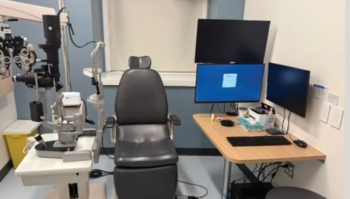
'Channel tracbeculectomy': scleral channel formation under the scleral flap
Conventional trabeculectomy aims to control IOP by way of a guarded fistula between the anterior chamber and sub-conjunctival space via leakage past the scleral flap. The resulting bleb is often seen to form under the anterior conjunctiva, where Tenon's layer and the conjunctival tissue are thinnest, predisposing patients to bleb-related complications at or near the limbus. Complications include cystic bleb formation, blebitis, endophthalmitis, dellen ulcer and bleb dysaesthesia, the use of anti-metabolites often compounding these problems.
We performed a study to evaluate a modified trabeculectomy directing aqueous drainage posteriorly to beneath the anatomically thicker Tenon's layer and conjunctival tissue to avoid such problems. Early results of our study suggest that we have found a method of achieving a suitable IOP, comparable to that of conventional trabeculectomy, whilst eliminating some of the complications related to this procedure.
The procedure
This channel is half the depth of the remaining scleral bed, measuring approximately 2 mm in width and running perpendicular to the limbus from the sclerocorneal ostomy to extend several millimetres distal to the posterior margin of the scleral flap (Figure 2).
When the flap is sutured back, the posterior end of the channel remains exposed and, upon replacing the conjunctiva and Tenon's layer, a channel-like fistula is formed between the anterior chamber and relatively posterior sub-conjunctival space. The conjunctiva is sutured to the cornea such that the free limbal edge is taut to minimize leakage (Figure 3).
Early results are encouraging
This modification has produced a desirable change in the profile of the trabeculectomy drainage bleb thereby reducing the risk factors for dellen formation, subjective bleb awareness and dysaesthesia.
In avoiding cystic bleb formation it is expected that the risks of leakage and infection are similarly minimized. IOP control is equal to that of conventional trabeculectomy and it is hoped that the scleral channel will enable the trabeculectomy to remain patent and functional in the long-term. Early results are encouraging and a larger trial consisting of patients with a conventional fornix-based trabeculectomy already in the fellow (control) eye would allow for a comparative study of this technique.
British ophthalmologists Alex Spratt (pictured) and Kerry Jordan work in the Department of Ophthamology, West Suffolk Hospital, Bury St Edmunds, UK.
Newsletter
Get the essential updates shaping the future of pharma manufacturing and compliance—subscribe today to Pharmaceutical Technology and never miss a breakthrough.













































